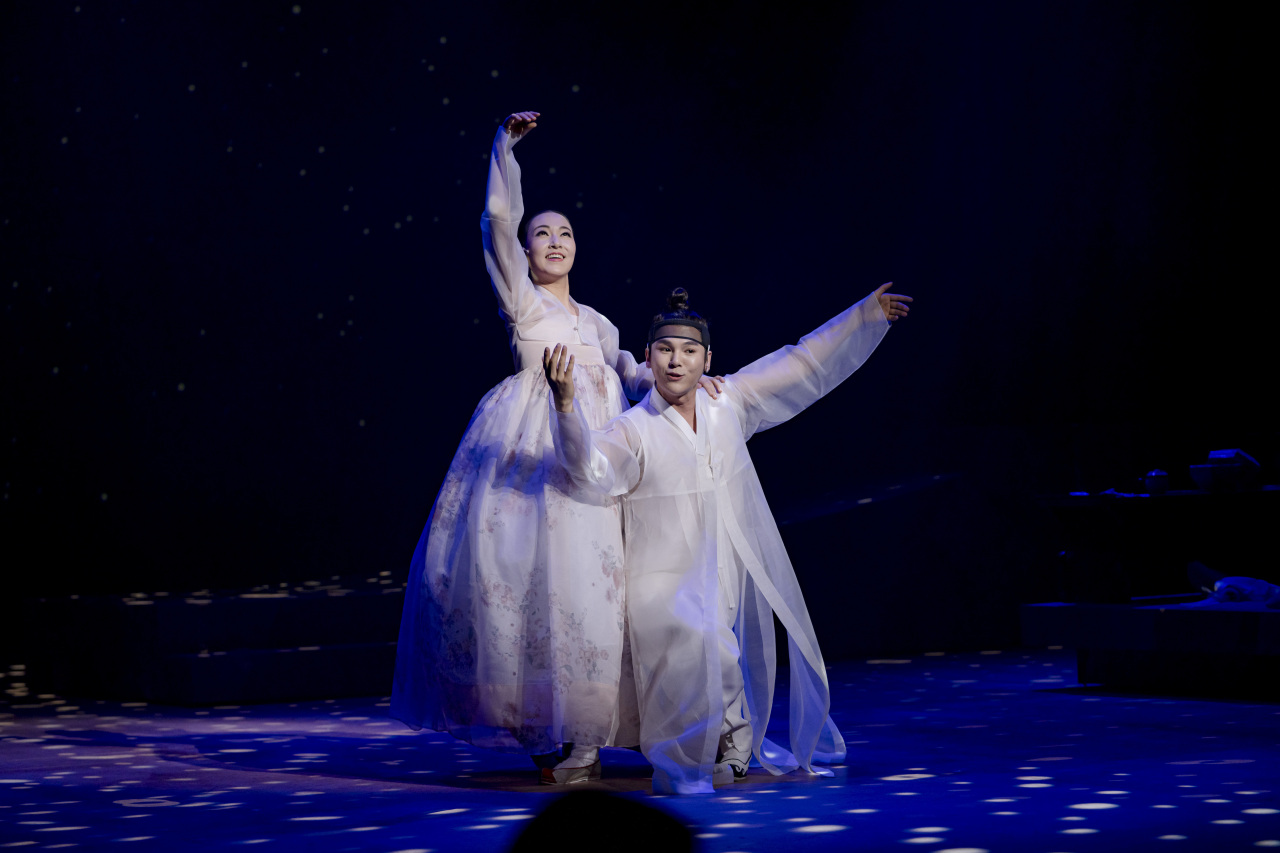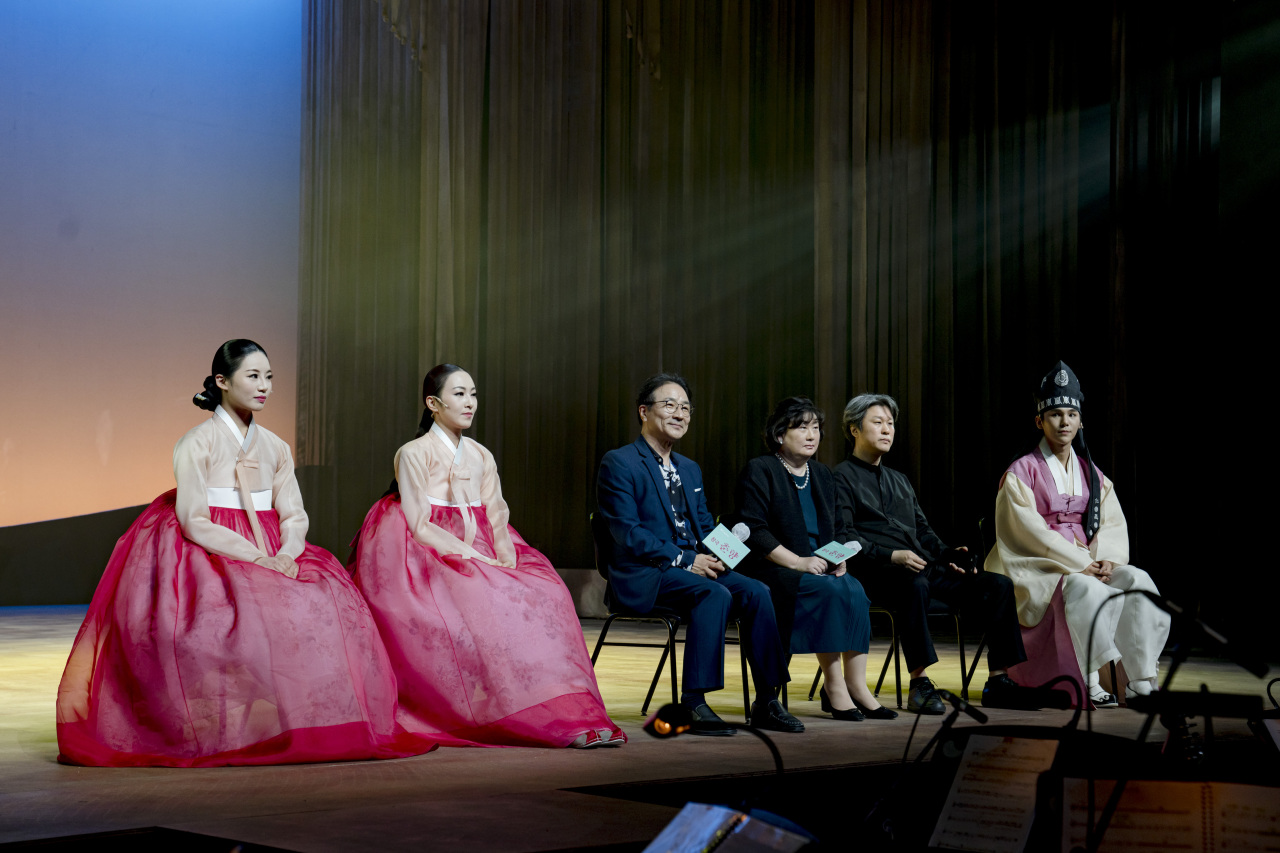Old yet new ‘Chunhyang’
National Changgeuk Company of Korea premieres ‘Chunhyang,’ featuring a more independent, active female lead
By Im Eun-byelPublished : May 16, 2020 - 16:00
As the performing arts scene slowly gets back on track despite the coronavirus crisis, the National Changgeuk Company of Korea staged its latest production, “Chunhyang,” Thursday.
“Chunhyang,” based on the well-known pansori (Korean folk narrative) “Chunhyangga,” depicts the love story between Seong Chun-hyang, the daughter of a retired courtesan, and Lee Mong-ryong, the son of a nobleman.
The epic love story is a staple of traditional stories of Korea, and thus has been frequently adapted for films, TV dramas and theater performances. This time, the troupe has turned the love story into a “changgeuk,” a form of Korean traditional opera.
The production team focused on turning Chun-hyang into a more independent, active character, reflecting the changing times, said playwright Kim Myeong-gon, who wrote the script and directed the show.
“This was about bringing Chun-hyang from a few centuries ago, and building up a character fit for the 21st century. Thinking about how the story can resonate with the audience of Chun-hyang and Mong-ryong’s age, we changed the details of the plot and characters while maintaining the original music,” Lee said at a press event held at the National Theater in central Seoul on Wednesday.
While the original story begins with Mong-ryong falling in love with Chun-hyang at first sight, the troupe’s show begins with Chun-hyang’s perspective as she gets ready to go outside. When Mong-ryong asks to meet her, Chun-hyang declines, saying she does not have to follow his orders, unlike in the original story.
“Chunhyang,” based on the well-known pansori (Korean folk narrative) “Chunhyangga,” depicts the love story between Seong Chun-hyang, the daughter of a retired courtesan, and Lee Mong-ryong, the son of a nobleman.
The epic love story is a staple of traditional stories of Korea, and thus has been frequently adapted for films, TV dramas and theater performances. This time, the troupe has turned the love story into a “changgeuk,” a form of Korean traditional opera.
The production team focused on turning Chun-hyang into a more independent, active character, reflecting the changing times, said playwright Kim Myeong-gon, who wrote the script and directed the show.
“This was about bringing Chun-hyang from a few centuries ago, and building up a character fit for the 21st century. Thinking about how the story can resonate with the audience of Chun-hyang and Mong-ryong’s age, we changed the details of the plot and characters while maintaining the original music,” Lee said at a press event held at the National Theater in central Seoul on Wednesday.
While the original story begins with Mong-ryong falling in love with Chun-hyang at first sight, the troupe’s show begins with Chun-hyang’s perspective as she gets ready to go outside. When Mong-ryong asks to meet her, Chun-hyang declines, saying she does not have to follow his orders, unlike in the original story.

Before the well-known “Sarangga” -- a love serenade, the most famous scene in the story -- Chun-hyang rips up her marriage license, protesting the way that women of the time were defined by marriage.
“I have been playing Chun-hyang since 2010, and it is the first time that I am ripping the paper into pieces. The act symbolizes how Chun-hyang defies the conventions of the time,” troupe member Lee So-yeon said.
The state-run troupe’s artistic director, Yu Su-jeong, agreed that the show’s take on the story is adventurous. As a former troupe member, Yu has played Chun-hyang too.
“I agree with the idea that traditional stories should change with time. I was Chun-hyang in my early 30s, too. Everything is different now -- the songs are faster, the story moves at a faster tempo. Visually, the hanbok costumes are very different, too,” Yu said.
“For example, in the ‘Sarangga’ scene, actors take off their clothes. Such a scene would have been impossible 30 years ago,” she said. “Still, despite all the changes, the original sound of ‘Chunhyangga’ should be preserved.”
While maintaining the traditional sound, the troupe also made changes to the traditional instrument lineup, featuring Western instruments, too, such as a piano. As a result, there is an overall abundance to the sound range.

“‘Chunghyangga’ is a beloved story, even to this day, because many can empathize with the story. Even centuries after the story’s birth, the love story between the two characters are what many people still dream of,” playwright Kim said. “Moreover, it is not just a love story between two people -- so many other characters are involved in it. It is a story about everyone.”
Due to the lingering fears of the new coronavirus, the 500-seat concert hall will make 50 percent of its seats available at each performance, leaving every other seat vacant. Temperatures will be checked at the entrance, and audience members must wear masks at all times.
The 150-minute play continues its run until May 24. Tickets are priced at 20,000 won ($16.29) to 50,000 won. More information is available at the National Theater of Korea’s website at www.ntok.go.kr.
By Im Eun-byel (silverstar@heraldcorp.com)








![[KH Explains] How should Korea adjust its trade defenses against Chinese EVs?](http://res.heraldm.com/phpwas/restmb_idxmake.php?idx=644&simg=/content/image/2024/04/15/20240415050562_0.jpg&u=20240415144419)











![[Today’s K-pop] Stray Kids to return soon: report](http://res.heraldm.com/phpwas/restmb_idxmake.php?idx=642&simg=/content/image/2024/04/16/20240416050713_0.jpg&u=)